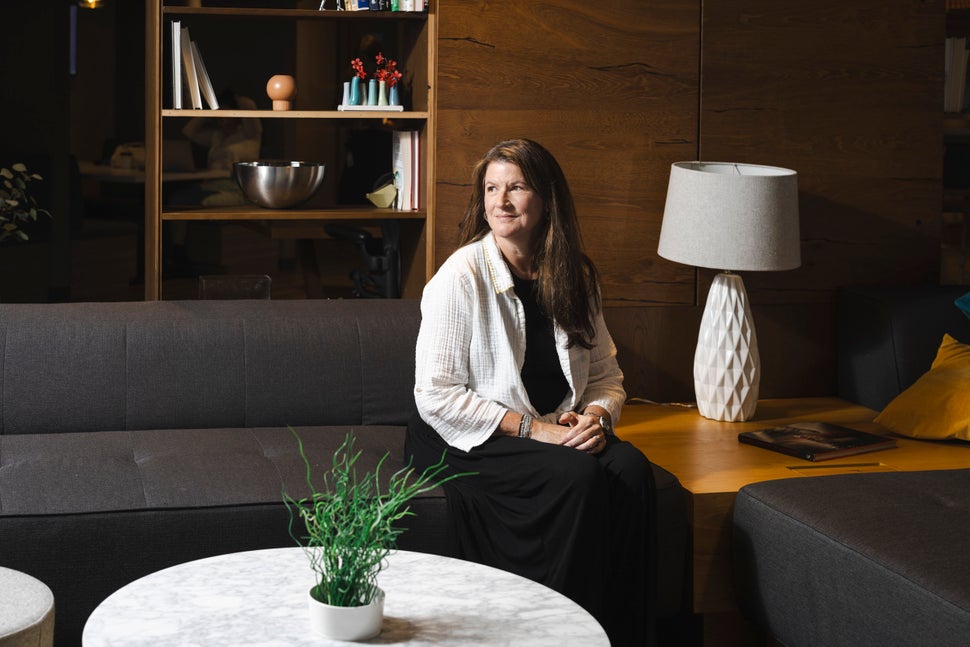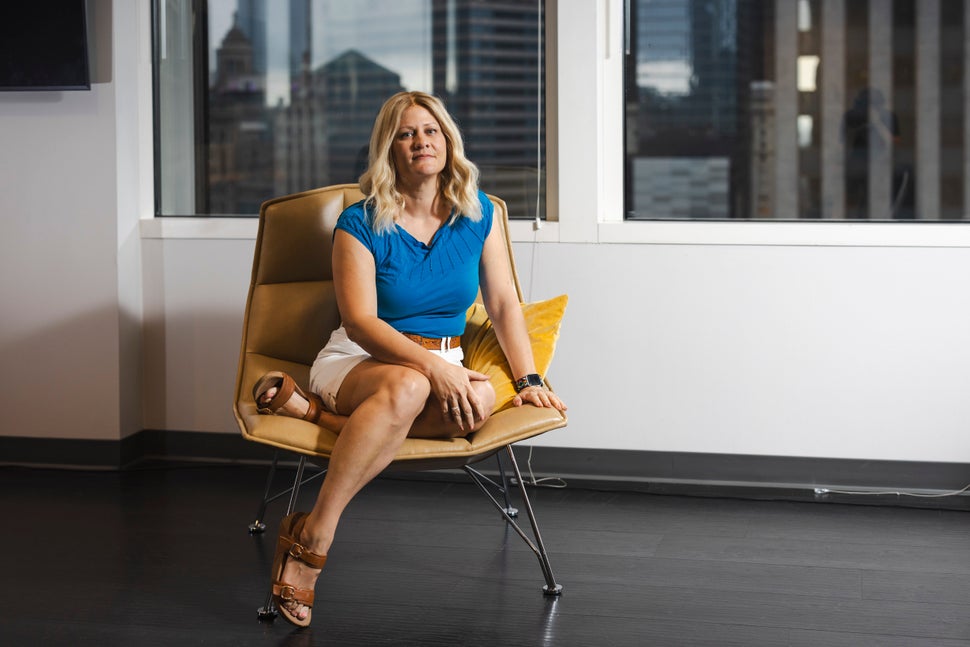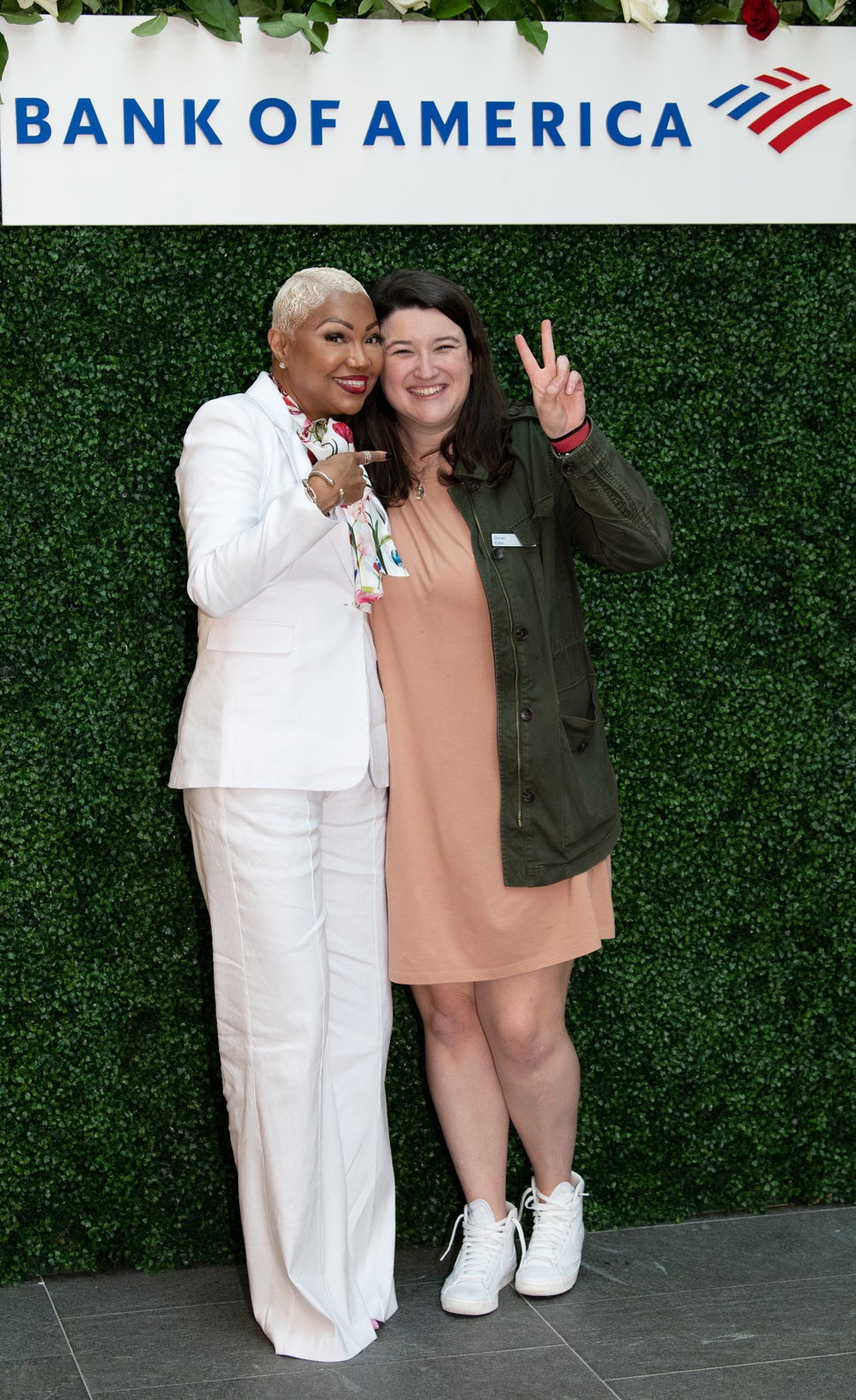
Being older at work is still seen as something to hide.
Elizabeth Harris has witnessed the toll it takes on friends and family. She’s watched her friends avoid mentioning graduation dates and years of experience on resumes, and dye hair before a job interview.
“I have been super lucky. And I have not [experienced age discrimination], as far as I know,” said Harris, the chief strategy officer of media and ad agency Arc Worldwide. “But it’s out there, for sure.”
Older age should be seen as a competitive workplace advantage. A 60-year-old startup founder is three times more likely to create a successful startup than a 25-year-old tech founder. Teams with older workers are more innovative than ones without them, Deloitte research found.
But even with their wealth of wisdom and leadership, older workers are all too frequently dismissed and discounted.
Ageist stereotypes are deeply entrenched in society: Older age still gets automatically associated with physical and cognitive decline at work. Older job applicants receive feedback that they are “overqualified” and “inflexible.” For women over 40, older age becomes a frequent excuse not to hire or promote them.
So talking about your older age is already radical enough on its own. But what if there was a club where getting older was not just acknowledged, but celebrated and championed?
In 2018, Harris decided to do just that when she started a new employee resource group at her company: one for midlife and later-career workers.
She appreciated the great work of the ERGs for women and parents that she was involved in, but she noticed there were particular issues directly affecting people over 45 that weren’t being talked about enough.
“ParentKind was talking a lot about caregiving for little kids, but they weren’t talking about when you’re caregiving for kids and parents at the same time,” she said. “They do financial planning and seminars in VivaWomen!, which is our women’s group, but they weren’t talking about specifically how do you save for your kids’ college fund and retirement?”
The idea for this new ERG would be to focus “on ending age discrimination and really providing employees 45-plus with the resources that they need to thrive,” Harris said.
The new ERG, dubbed Sages, would be for midlife and older employees, but anyone would be welcome to join. “Ageism is an ‘ism’ that can affect everybody at some point in their life,” Harris said.

Alma Klein, senior vice president and creative director at Arc Worldwide, was one of the members who joined outside the intended age range. Even though Klein wasn’t necessarily considered older in the workforce, helping older employees become more welcomed and valued within the agency came from an “altruistic and self-interested” place, she said.
“I didn’t see a ton of older employees, specifically older women, in creative roles,” Klein said. “And I feel like it was a bit of self-interest that I wanted to make sure that I could age-proof my career because I wasn’t ready to quit being in advertising.”
After launching, the new Sages group decided that its first programming would be about older women’s health, focusing on menopause. Harris said the organizers initially wondered if an event on menopause would draw a big enough crowd. They consulted with a Sages board member who was in her late 20s and was interested in hearing more on a topic that “nobody talks about,” Harris recalled.
Sages went forward with the forum, inviting two physicians to come speak. “A big part of what they spoke about was menopause. What it is, what it is not, what to expect, the changes that your body goes through and different ways to manage much of the less-than-fun stuff that comes along with it,“ Harris said. Turnout was a success.
“We actually had a bunch of guys show up because they’re like, ‘I want to understand what my wife is going through,’ so I was super happy and encouraged by it,” Harris said.
Since then, Sages has grown into a business resource group within the umbrella company of Publicis Groupe; it has over 300 members. Sages events have included film screenings and sessions on retirement planning and caregiving benefits, while its policy branch works to effect broader change such as inclusive interview practices.
And on a basic level, Sages gives members a space where the joys and frustrations of getting older are accepted and not taboo.
Recent topics of discussion on the Sages’ internal chat on Teams have included appreciation for “Grace and Frankie” and “80 for Brady,” advice on how to handle hot flashes ― which Sages members subsequently rebranded as “power surges” ― and a study on the importance of not overlooking consumers over 50.
“There’s power in numbers, and especially in an industry that is very youth-oriented, it’s nice to find some other folks who you have something in common with,” Klein said about the feeling of solidarity Sages offers.

Age-focused ERGs are still the exception, not the rule.
Employee resource groups have a long history of advocating on behalf of underrepresented groups in corporate America. After the Civil Rights Movement of the 1960s, Black employees at Xerox pioneered the first employee resource group in the U.S. in 1970, called the National Black Employees Caucus. The affinity group connected Black Xerox employees across different cities, addressed work discrimination, and identified and advocated for Black employees to get promoted to top management within the company. Computer manufacturer Hewlett-Packard is credited with having the first ERG for LGBT employees in 1978.
Now, ERGs focused on women, race and ethnicity, and the LGBTQ+ experience are the most common types of resource groups for employees, according to a 2011 survey of 64 mostly global, for-profit companies ranging from 1,600 to 380,000 employees.
But openly acknowledging age diversity at work and making it the focus of an employee resources group is still rare and novel.
None of the top 10 largest employers in the U.S. have ERGs focused on the experiences of older employees. Theresa Welbourne, a professor of entrepreneurship at the University of Alabama, told HuffPost that for an upcoming study, she found that only 3% of ERGs out of a sample of 70 different ERG types were dedicated to people of different generations. While the study hasn’t been submitted for review yet, the early findings aren’t surprising.
“By not speaking about age in the workplace, the needs of older employees go underreported. And consequently, unresolved.”
- Kyra Leigh Sutton, an HR expert in the Rutgers School of Management and Labor Relations
Legal departments may hesitate to approve an age-specific ERG out of fear employees will either learn they are being mistreated or accuse each other of unfair special treatment and sue, said Anna Ettin, who helped launch the Inter-Generational Employee Network at Bank of America when she was a learning consultant there.
“Is this group offering a benefit to one generation or older employees that is not offered to younger employees?” is a question legal departments will want answered, Ettin said.
Kyra Leigh Sutton, an HR expert at the Rutgers School of Management and Labor Relations, said that generational ERGs, especially those directed at older workers, are rare because they could lead to members revealing how old they are. And there are risks associated with being seen as older.
“Some employees avoid speaking about age in the workplace, as they don’t want people to think there’s something they can’t do because of their age,” Sutton said. “Unfortunately, by not speaking about age in the workplace, the needs of older employees go underreported. And consequently, unresolved.”
As Klein put it: “It’s still OK to be ageist in our society.”
“Nobody’s going to cancel you for being an ageist ... people get away with it,” she said. “We also have a culture where it’s not OK to say that you’re old.”
Age-focused ERGs help employees in the ‘sandwich generation.’
For the rare companies that do create one, age-focused ERGs offer a number of benefits to employees. One big perk? The better sense of belonging when you learn you’re not the only one who is that age.
AT&T’s Professional 50 Forward ERG was founded in 2014 and has over 4,000 members. Tom Hamrick, the group’s president, said what separates his ERG from others at the company is that members are part of the “sandwich generation”: People in this group often feel sandwiched between taking care of their own children and their aging parents, on top of other life events, he said.
Hamrick said one of Professional 50 Forward’s most popular events has been about retirement and estate planning.
“It was so liberating. We discussed things together that we never discussed before.”
- Karen Weiss, who helped launch Intuit Silver Network
For Sages board member Chandra Panley, who is the senior vice president of operations at the Starcom agency, one event that stands out was called “Dude, Where’s My Car?” about how to manage memory loss.
The pitch for interested employees was that “Our memories can be a big part of our identities. Join us for a coaching session where you’re going to learn strategies for being intentional, and how to be patient with ourselves and learn that it’s OK to ask for help,” Panley recalled.
“It was so fun and so interesting, and so well attended,” she added.
When age diversity is recognized, generational divides in the workplace can become bridges.
It’s now common to work next to someone at the beginning of their career while you are finishing yours. There are as many as five different generations in today’s workplaces, from people born between 1925 and 1942 to those born in the mid-1990s and later, according to the Society for Human Resource Management. And they don’t always understand each other.
That’s why ― in addition to ERGs that focus on the needs of employees of a certain age ― some employers create intergenerational ERGs to help bridge those gaps in work styles and communication.
Ettin, who helped launch the Inter-Generational Employee Network at Bank of America, said the idea began with her researching generational dynamics in 2010 and sending out an email survey to gauge whether employees would be interested in the topic.
Ettin got a strong response. “It was baby boomers saying, ‘My new manager is the same age as my kid who’s living in my garage apartment. How am I supposed to report to this guy?’ And the millennials are saying, ‘You guys hired me, you know, you got me out of my MBA program ... and I’ve been sitting in a cubicle for six months. Nobody cares what I think,’” Ettin said.
“That’s when we’re like, ‘Oh, my gosh, this is an intergenerational issue. ... We can’t just do a young employees group, that doesn’t actually serve our employees’ needs,’” she continued.
The Inter-Generational Employee Network launched in 2012 and now has 37,000 members and 33 global chapters at Bank of America. As part of the monthly new member orientation, hires learn about generational diversity from generational ambassadors and employees can take training opportunities about working with people in different life stages.
One powerful benefit to an intergenerational ERG is how it can connect two people with different tenures in an organization, so that it’s a mutual benefit to junior and senior employees, Ettin said.
Take it from Calandra Jarrell and Devan Kane, two Bank of America employees who started working together about a year and a half ago. Jarrell, the senior vice president of diversity and inclusion, is a Gen Xer and Kane, who works closely with Jarrell on her internal communications, is a millennial.

It was an instant connection. “I immediately started learning from her and picked up on her energy,” Jarrell said. She said she’s learned from Kane about what younger generations want their employers to openly talk about, as well as the power of a “be brief, be bold, be gone” style of communication.
Instead of just texting, Kane will “just meet me where I am and pick up the phone and say, ‘Hey, let me talk you through this.’ And then all is right with the world,” Jarrell said.
“One thing my generation can be known for is being kind of super fast and almost reactive,” Kane said. “And what I’ve learned from Calandra, in just the short time we’ve known each other, is to take a deep breath, take a step back and let things almost come to you, which is not my nature.”
It’s a reminder of how age can be a barrier between co-workers, but it doesn’t have to be. It can also be a way to gain a new work friend and ally.
Here’s why everyone should care about age-focused ERGs.
Ultimately, aging is a life experience that everyone carries with them to work.
At Land O’Lakes’ Aging Successfully ERG, for example, anyone ― from interns to senior employees ― can join. The ERG teaches employees who are just out of college about 401ks and discusses phased retirement with employees interested in transitioning out of the workplace.
“The truth is that we’re all aging,” said Kevin Hoepker, the ERG’s co-lead.
To start your own age-focused ERG, Harris said to make membership inclusive even if the group is tailored for people of a certain age. “You don’t want to just be talking to yourselves,” she said.
When pitching the ERG, point out the value of keeping older workers engaged.
“We bring experience and wisdom and deep knowledge and client relationships. So there’s also a value to the experience and historical knowledge of older workers,” Klein said.
And if that’s not enough, remind bosses of the importance of reaching older customers. “Guess who’s got the deepest pocketbooks and the most spending money? Surprise, it’s people over 50. They hold a dramatic percentage of the wealth in America,” Klein said. “And yet too many brands are hyper-focused on the 18- to 34-year-old brackets.”
It may take some convincing, but it’s not too late to start your own age-focused ERG. You may be surprised by how many people will want to join.
Just last year in April, Intuit’s Karen Weiss posted a blog about the new Intuit Silver Network she was helping to launch to serve the interests of employees 50 and over.
After her post, she saw the internal channel for the group spike from 40 members to 560. Unprompted, members shared their ages when they joined.
“People were joining, saying, ‘I’m so happy, I finally feel seen and heard at work,’” Weiss recalled. “It was so liberating. We discussed things together that we never discussed before.”
“We’re not squeamish in the Silver Network,” Weiss said about their internal chats. “I presented to the group on the care and death of my elderly parents. And everybody had some aspect of that they related to, whether it was diapers for adults, whether it was dealing with hospice care. We talk about things that are not necessarily happy, but that are important.”
This October, Weiss said the Intuit Silver Network will do weekly one-hour Zoom sessions where members can work on building a legacy document of instructions for loved ones after death “so that by the end of the month, we’ll have it done. And we’ll have the support of each other.”